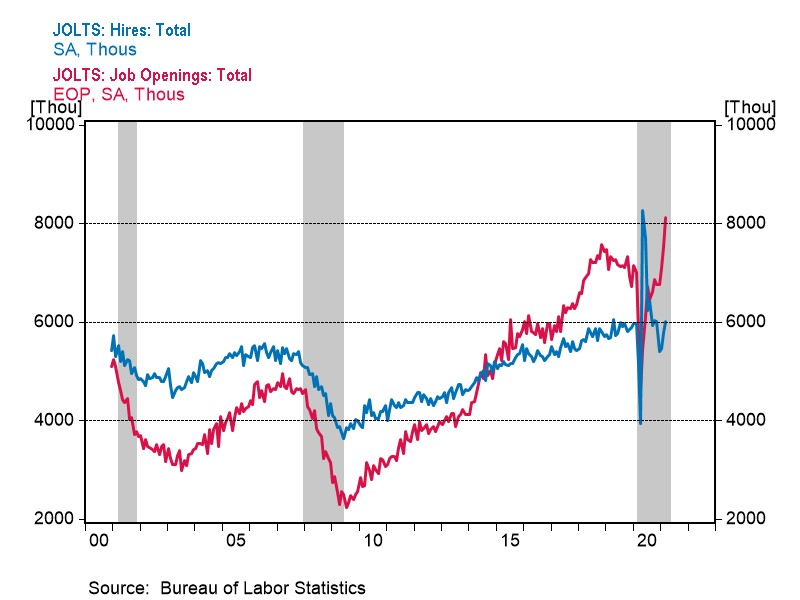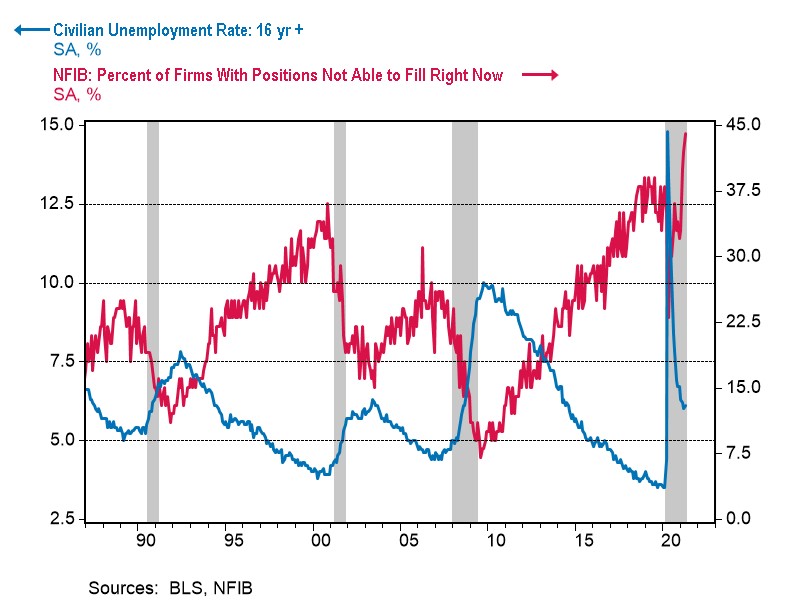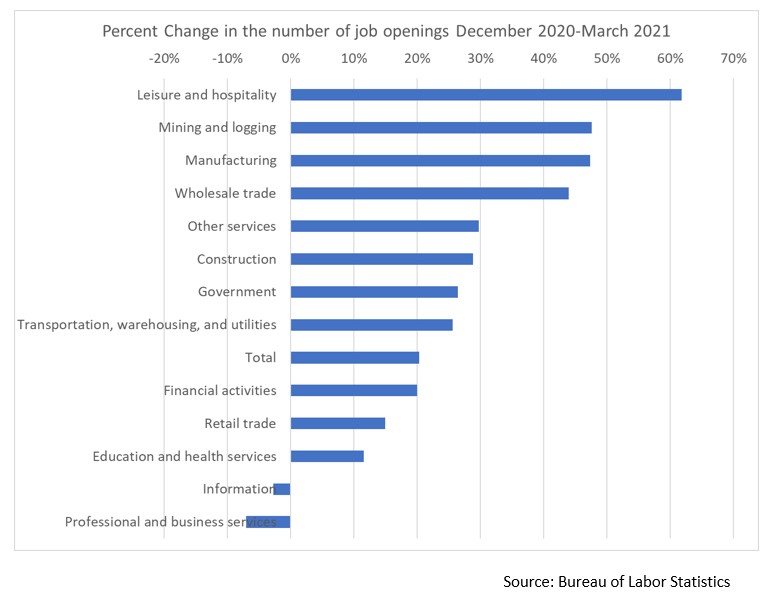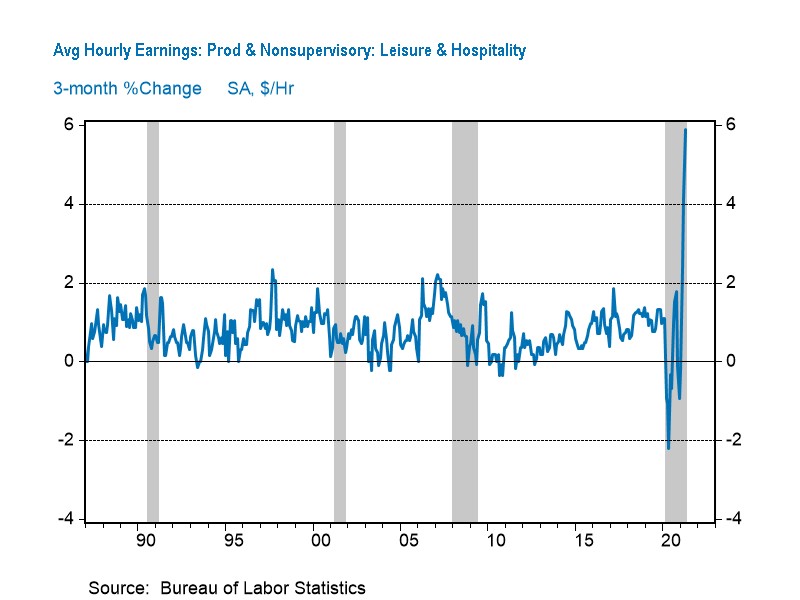Job openings at a record high, and labor shortages are back
11 May. 2021 | Comments (0)
Despite still-elevated unemployment rates—and 8.2 million jobseekers waiting to be added to payrolls—labor shortages are back. As large segments of the economy continue to reopen at the same time, labor supply will be constrained, with these shortages likely to remain for the better part of 2021.
Today, the Bureau of Labor Statistics released the results of the March 2021 Job Openings and Labor Turnover Survey. The number of job openings jumped 8 percent in March—and 20 percent over the past three months—to a record high of 8.1 million (chart below). The number of hires is growing much more slowly. The ratio between job openings and hires is a proxy for the average time to fill a job opening in the economy. It is now the highest ever and has been rising sharply in recent months.

The difficulty of filling job openings is also reflected in a survey by the National Federation of Independent Businesses, also released today. Even with unemployment rates still hovering near 6 percent, the share of employers reporting open positions they are unable to fill reached 44 percent in April, a new record (chart below). The recruiting difficulties may partly explain the surprisingly low employment growth in April’s BLS jobs report.

The increase in job openings was especially visible in industries that rely more on blue-collar and manual services workers (chart below). In particular, the leisure and hospitality sector (restaurants, hotels, entertainment, etc.) experienced the fastest growth in job openings as employers in these industries were able to increase activity as the economy opens up.

Recruiting and retention difficulties are more pronounced in blue-collar and manual services jobs. While demand for these workers is rapidly growing, labor supply is constrained, because these workers face high infection risk and elevated unemployment benefits are an especially attractive option for workers with relatively low wages. In the leisure and hospitality sector, where most workers are women, the childcare crisis is another obstacle limiting the supply of workers.
Companies are reacting to labor shortages by raising wages, especially in the leisure and hospitality sector. Average hourly earnings of non-supervisory employees in leisure and hospitality increased by six percent in the past three months, dwarfing any other period in recent decades (chart below).

Some causes of the current labor shortages, including high unemployment benefits, fear of infection, and the childcare crisis, are largely temporary. So, labor shortages will probably ease as most people get vaccinated, children return to in-person schooling in the fall, and generous unemployment benefits expire in September. But a tight labor market may reappear as soon as late 2022. Massive job growth in 2021 will significantly lower the unemployment rate and tighten the labor market. And for the first time in US history, the working-age population is shrinking as many baby boomers are reaching retirement age. This will create increased demand and job opportunities for younger job seekers which would further lower the unemployment rate.
-
About the Author:Gad Levanon, PhD
The following is a biography of former employee/consultant Gad Levanon is the former Vice President, Labor Markets, and founder of the Labor Market Institute. He led the Help Wanted OnLine©…




0 Comment Comment Policy